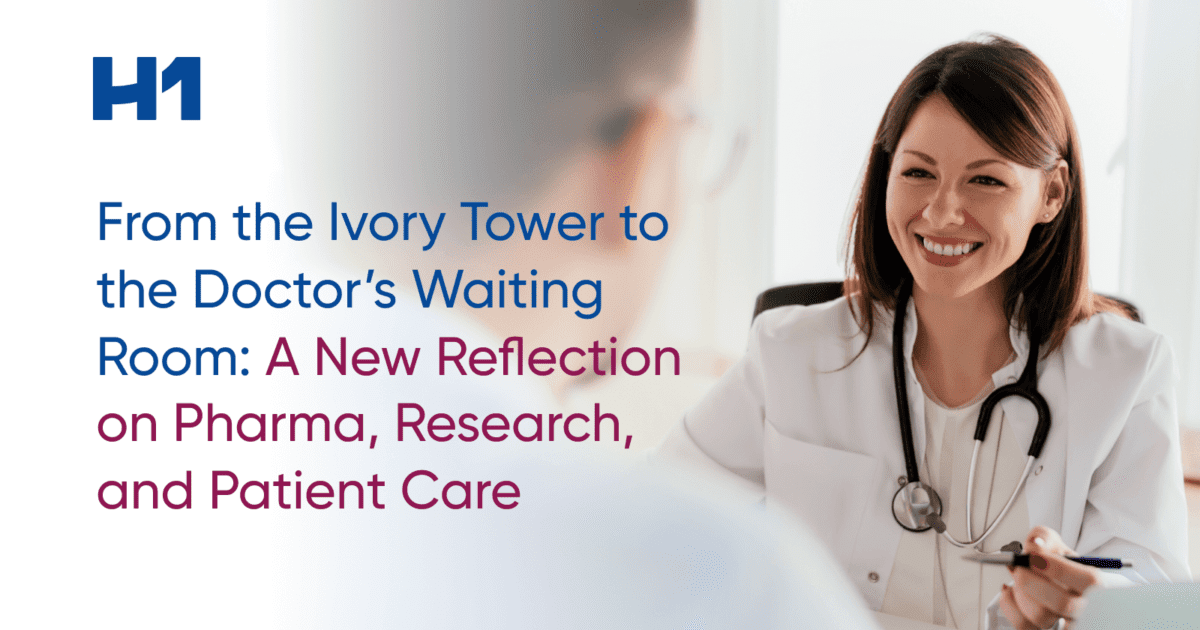Going with the Digital Flow

Defining, Segmenting and Engaging Non-Traditional KOLs
Even now: two and a half years later, the COVID-19 pandemic continues to have a substantial impact on the activities of Medical Science Liaisons (MSLs), including access to Key Opinion Leaders (KOLs) and how MSLs engage with them. The downstream effect is a continued burden of cost and time in getting drugs to market.
H1 has conducted several surveys with the Medical Science Liaison Society (MSL Society) to understand this impact and what the activities of MSLs have been during the pandemic.
What H1 found from those surveys was a new adaptability and flexibility within the MSL role to explore a new digital ecosphere to find KOLs and that in-person meetings didn’t always equal success in a post-COVID world.
Going with the Digital Flow
In the last decade, the role of Medical Affairs has evolved into its own pillar, sometimes functioning as an individual contributor or more commonly as a strategic partner in cross-functional roles within commercial and R&D teams.
The emergence of COVID-19 often created more complexity and space between the larger strategy of an organization and the experts that the MSL supports and seeks to engage with. As evidenced by the survey, the emergence of COVID-19 also created more complexity in the often in-person engagements MSLs were used to.
But what many organizations discovered was an opportunity to uncover new and emerging social media and digital channels where experts were sharing the latest breakthroughs and research: also a new and untapped resource to find KOLs. This meant a new frontier for the role that has historically relied on in-person engagements and meetings–a modernization of sorts.
The new hybrid model proved to be effective and emerged as part face-to-face and part digital outreach, but MSLs had to sharpen their technical skills and still engage soft skills, such as active listening, emotional intelligence, and precise communications. It also forced MSLs to look beyond traditional KOLs to the somewhat untapped landscape of digital opinion leaders (DOLs); regional treatment leaders, rising stars and what we at H1 have termed “Uncut GEMS.”
New Brands of KOLs and Uncut Gems
General Experts and Meaningful Stars or Uncut (GEMS) in short are the HCPs who are not (yet) KOLs, but do have significant experience in a given Therapeutic Area. They are HCPs with an established academic and treatment career, who can bring fresh ideas and diversity of thought to the table but still need the opportunity to break through and have their research recognized.
Let’s look at what we know now:
Key Opinion Leaders (KOLs) are typically established physicians or PhDs who are well-known and experts in their fields. They regularly publish papers, attend and speak at conferences, and sit on multiple Pharma advisory boards.
Digital Opinion Leaders (DOLs) can be anyone from healthcare professionals to even patients, journalists and science writers who have an influential digital voice in the community. Unlike social media influencers, DOLs are not trying to self-promote but rather want to educate, engage, and challenge their followers. They are experts at providing clear and concise scientific communication virtually, while having the professional credentials and credibility to back up their statements.
Rising stars on the other hand are considered the needles in a haystack; the HCPs who are very early on in their career and have not yet had a chance to prove themselves but are clearly incredibly talented. In most cases, companies prefer working with HCPs who can bring both fresh perspectives as well as experience to the table. It is the combination of these two qualities that defines Uncut GEMS. These HCPs often provide a better reflection of the community as they represent a more diverse and equitable perspective in comparison to rising stars and established KOLs.
Don’t Miss the Opportunity
Uncut GEMS and DOLs are communicating to a large audience. They are a new and important stakeholder in healthcare and if you’re not engaging with them, you don’t have a chance to educate or understand what these new stakeholders think is important, and you may be missing something important.
DOLs can help life science companies with a number of things:
- Spreading the word about clinical trial recruitment or new data
- Provide feedback on marketing materials and messaging
- Co-create marketing, medical, educational, or patient support resources
- Share disease awareness initiatives
Usually, companies want to engage with DOLs to co-create programs, get them to share unique insights, or to help educate their peers. If they engage with them longitudinally and build authentic relationships over time, they will have someone who has the power to reach a large volume of potential customers without too much effort.
DOL Twitter mentions can drive citations and increase awareness in the medical community around new data or changes to treatment algorithms.
Measuring Impact in the Virtual Realm
How is this type of MSL impact measurable, and what is critical to measure with the absence of in-person meetings? The answer is not as simple as it seems. Previous metrics factored in the number of MSL meetings, but the scope and definition of MSL impact is growing beyond meetings. Other considerations could be scientific share of voice or clinical care gaps.
Beyond these KPIs, there are several other metrics that companies may use. Some use the number of days in the field, the time spent with KOLs, the number of insights that are garnered, and the number of scientific presentations that are given.
The real challenge is how to put a metric in place that measures the “move the needle” impact as desired, especially when engaging new and evolving thought leaders in digital spaces. While it is typical to expect a minimum number of interactions per month, placing more emphasis on empowering MSLs to focus on the value proposition and be strategic about who they engage with will allow them to garner insights and bring value that is much more relevant and actionable.
The digital universe has opened opportunities for KOLs to be heard broadly rather than only from a publication or a podium; KOL voices can now be amplified in situations that were deemed difficult in the past. With scientific contributions being made from around the world, KOLs can now have a global impact.
As Medical Affairs evolves with changing times, it can be challenging to find the optimal strategic engagement plan for a particular project.
MSLs are often brilliant scientists who step into a role that has become incredibly important to help deliver care and it’s ever expanding with possibilities. The skills and experience required of MSLs, and the impact they make, has never been more important, as they help illuminate insights about products that can ultimately help patients.

 HCP Universe
HCP Universe Trial Landscape
Trial Landscape